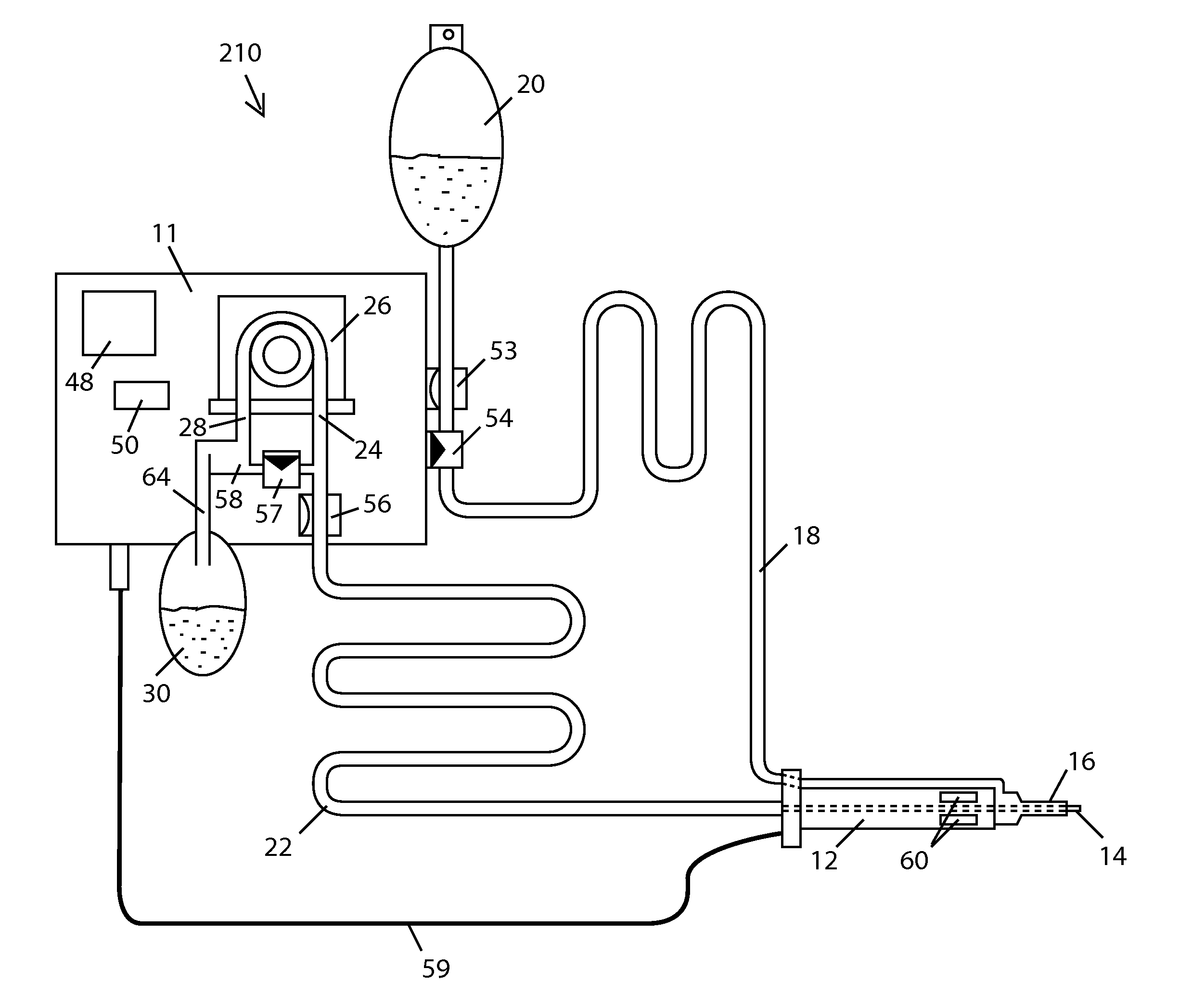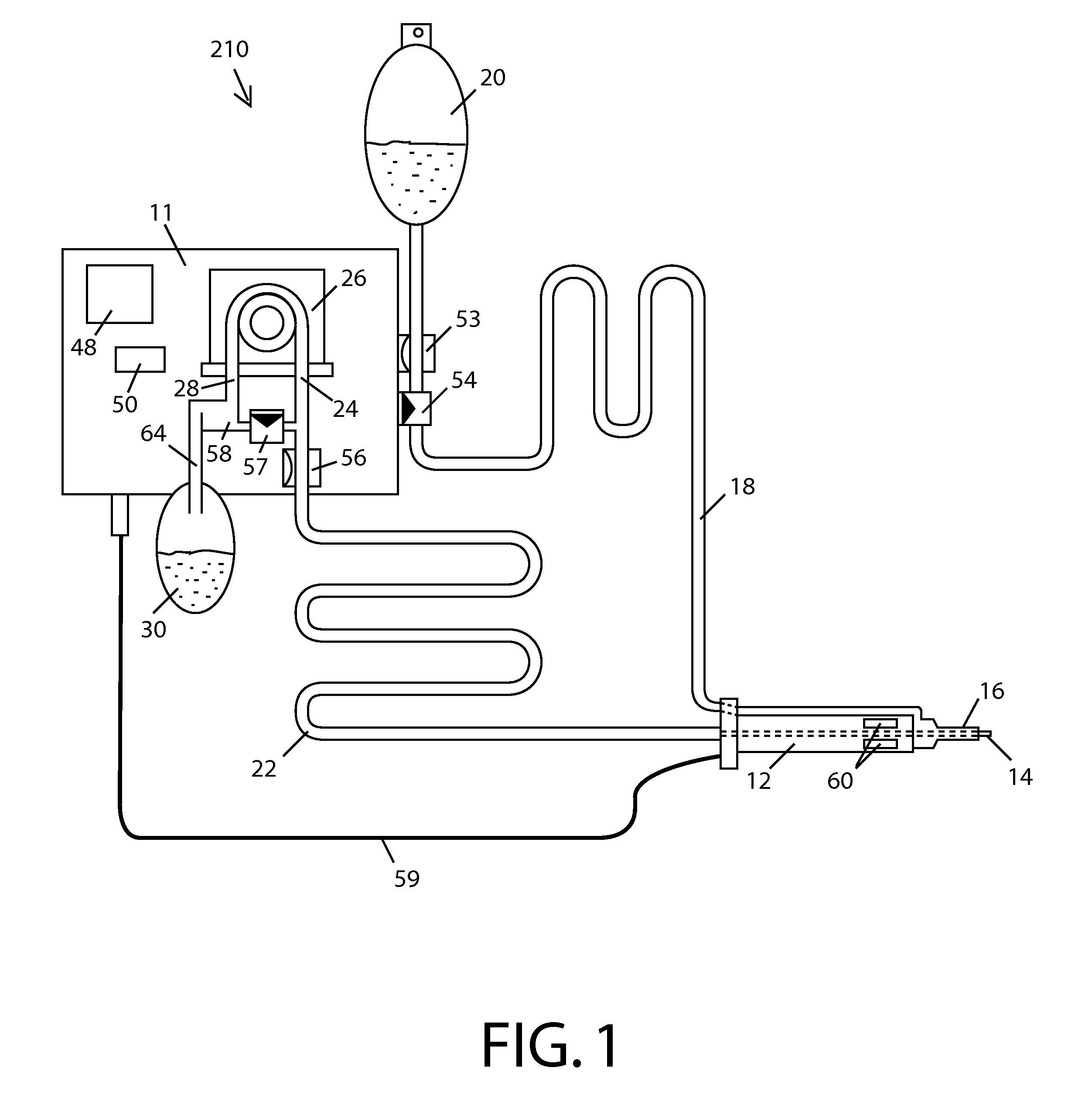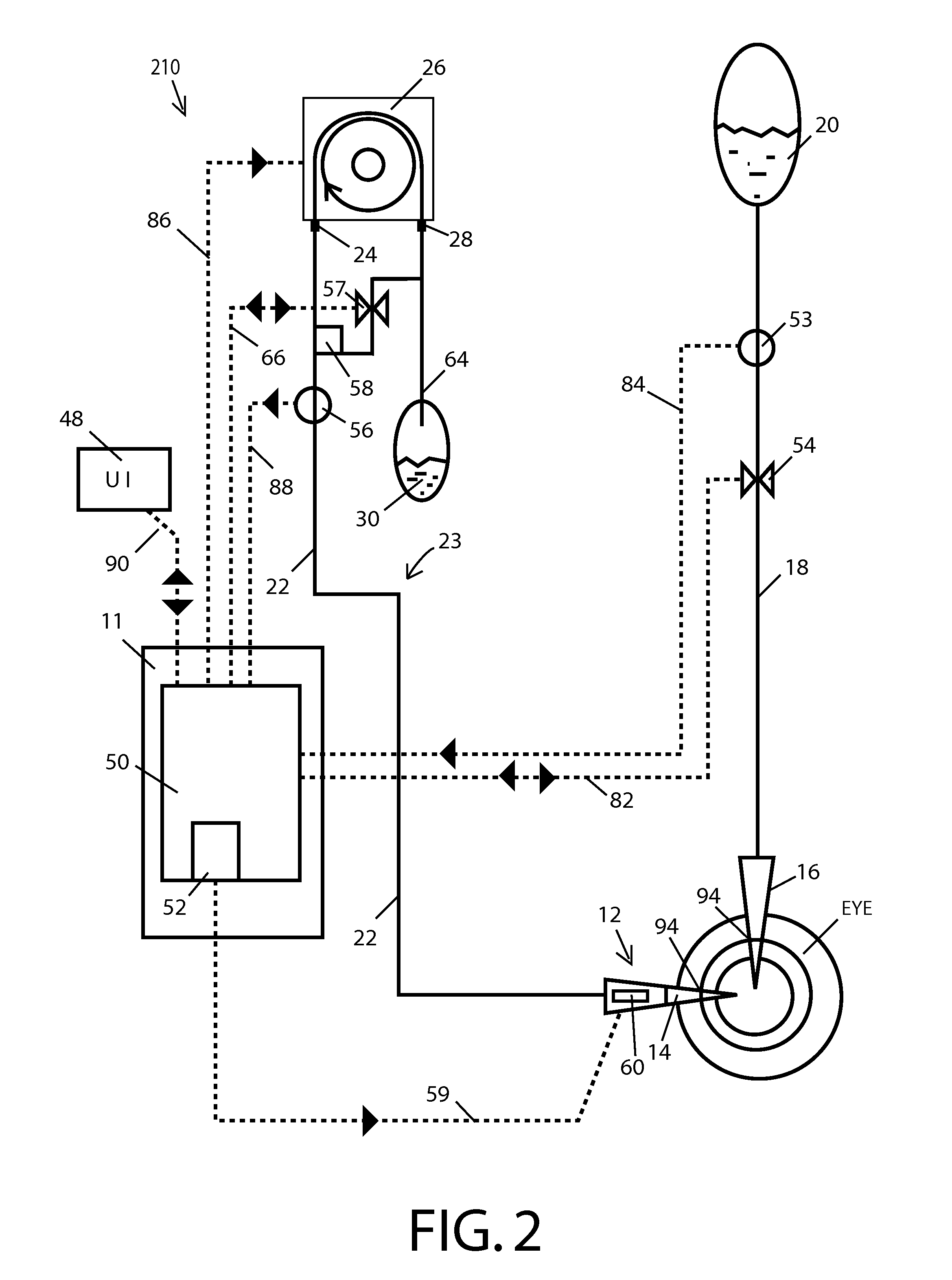Post-occlusion chamber collapse suppressing system for a surgical apparatus and method of use
- Summary
- Abstract
- Description
- Claims
- Application Information
AI Technical Summary
Benefits of technology
Problems solved by technology
Method used
Image
Examples
Embodiment Construction
[0074]As shown in FIGS. 1 and 2, in a prior art lensectomy surgical system 10 for use through an operating hand piece 12 includes a console 11. Console 11 generally includes a control module or CPU 50 providing control means, an aspiration pump 26 connected to CPU 50 through a cable 86 and a hand piece power driver 52 connected to CPU 50 through a cable 59. An irrigant solution is contained in an infusion source 20 being fed into an eye chamber with a pressure typically set by gravity or a compressed gas source. Hollow probe 14 and infusion probe 16 typically operate inserted into an eye chamber through one or more tight incisions 94. An infusion valve 54 can deliver irrigant solution through an infusion line 18 and infusion probe 16 into the eye under operator command through a user interface 48 typically including a foot pedal. Infusion valve 54 is connected to CPU 50 through a cable 82. Cable 82 can also provide a valve 54 status signal back to control module 50.
[0075]An irrigant...
PUM
 Login to View More
Login to View More Abstract
Description
Claims
Application Information
 Login to View More
Login to View More - R&D
- Intellectual Property
- Life Sciences
- Materials
- Tech Scout
- Unparalleled Data Quality
- Higher Quality Content
- 60% Fewer Hallucinations
Browse by: Latest US Patents, China's latest patents, Technical Efficacy Thesaurus, Application Domain, Technology Topic, Popular Technical Reports.
© 2025 PatSnap. All rights reserved.Legal|Privacy policy|Modern Slavery Act Transparency Statement|Sitemap|About US| Contact US: help@patsnap.com



